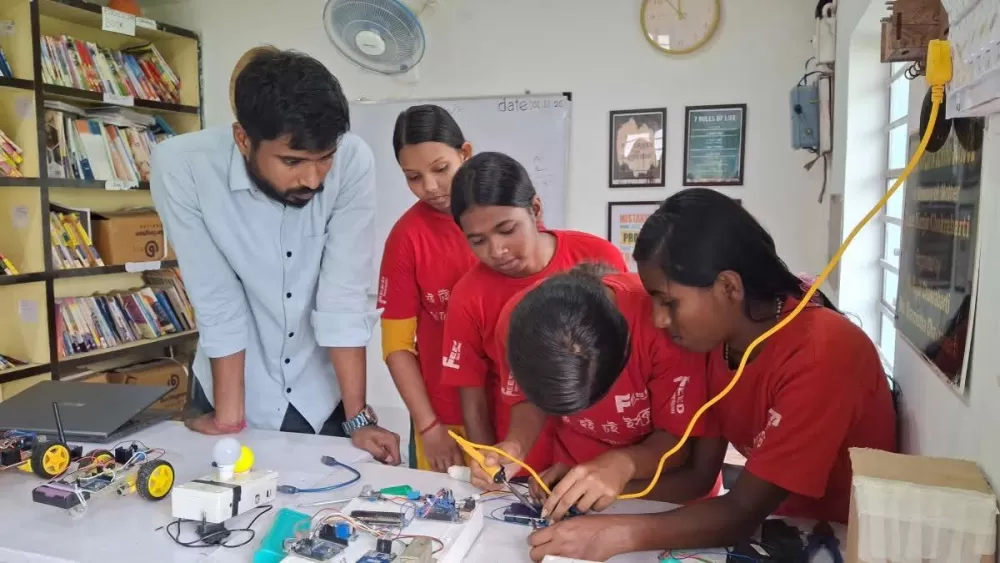Beyond GMOs: How Tiny Tech is Revolutionizing Crop Creation, Naturally
Share- Nishadil
- November 06, 2025
- 0 Comments
- 4 minutes read
- 24 Views

Nanotech's Green Revolution: Gene Editing Without the GMO Label
Researchers have unveiled a revolutionary gene-editing technique that uses nanotechnology to precisely modify plant DNA without leaving any foreign genetic material behind. This breakthrough could dramatically streamline crop development and reshape how we approach food security, offering a 'transgene-free' path forward.
For decades now, humanity has wrestled with a crucial dilemma: how do we feed a burgeoning global population, and do it sustainably, when our planet's resources feel ever more strained? The promise of genetic engineering, certainly, has always dangled before us – the idea of crafting hardier, more productive crops. But, let's be honest, the path has been anything but smooth. Traditional methods often involved inserting foreign DNA, a process that, frankly, became synonymous with the controversial 'GMO' label, bringing with it a whole host of regulatory hurdles and, well, understandable public apprehension. And here we are, at a crossroads, you could say.
But what if we could have the precision without the baggage? What if we could tweak nature's blueprint for the better, making plants more resilient, more nourishing, without leaving behind any 'foreign' genetic footprints? That, my friends, is precisely what a brilliant team of researchers, pulling together expertise from the U.S. Department of Energy's Oak Ridge National Laboratory, the University of Tennessee, and others, has managed to achieve. They've unveiled a groundbreaking, truly 'transgene-free' method for gene editing in plants, and it's all thanks to — wait for it — nanotechnology.
You see, the traditional route often means permanently embedding new genes into a plant's genome. It's effective, yes, but it flags the plant as a genetically modified organism, subject to stringent oversight and, quite often, a rather skeptical consumer base. This new approach, though? It’s a rather ingenious workaround, isn't it? The scientists have figured out how to use incredibly tiny carbon-based nanomaterials as a kind of high-tech delivery service. They package the celebrated CRISPR-Cas9 gene-editing components – that's the Cas9 protein and its guide RNA, for those keeping score – directly into these nanoparticles.
The magic, honestly, lies in the delivery. Instead of the editing machinery becoming a permanent resident in the plant's DNA, these nanoparticles simply ferry the CRISPR-Cas9 components into the plant cells. The Cas9 then does its precise snipping and editing job, and crucially, the editing machinery itself is transient. It performs its task, and then it simply degrades, leaving behind a perfectly edited plant with no trace of foreign DNA. It's like having a skilled surgeon perform a delicate operation and then, poof, the surgical tools vanish. No lingering foreign bodies, just a healthier, improved outcome. This means, in truth, the edited plants may well bypass the contentious GMO classification entirely.
The team didn't just stop at a theory; they put it to the test. They successfully demonstrated this novel technique in a common model plant, Nicotiana benthamiana – a workhorse in plant research, you could say – and, significantly, in rice, a staple crop for billions worldwide. Think of the implications for global food security! Faster crop development means we can more rapidly breed plants that can withstand changing climates, resist pests, or even offer enhanced nutritional value. We're talking about a genuine acceleration of agricultural innovation, helping farmers grow more with less, which, let's face it, is what sustainability is all about.
This isn't just a scientific curiosity; it's a paradigm shift. By sidestepping the regulatory quagmire and public perception challenges associated with conventional GMOs, this nanotechnology-driven, transgene-free approach could open doors to a future where plant breeding is both incredibly precise and widely accepted. It promises, in a very real sense, a greener, more resilient agricultural landscape – one where we can truly harness the power of genetic understanding to feed the world, naturally, and with far fewer debates.
Disclaimer: This article was generated in part using artificial intelligence and may contain errors or omissions. The content is provided for informational purposes only and does not constitute professional advice. We makes no representations or warranties regarding its accuracy, completeness, or reliability. Readers are advised to verify the information independently before relying on







